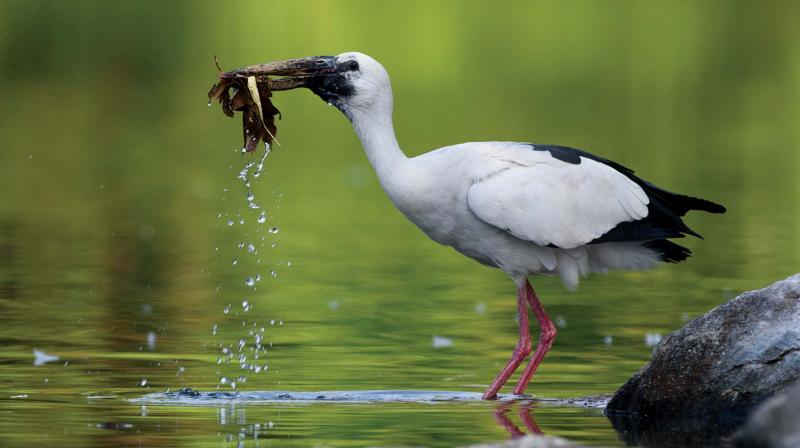Beakons of nature's bounty

At just about 3 km from the historic town of Srirangapatna, 18 km from Mysore, and 128 km from Bengaluru, Ranganathittu Bird Sanctuary is a well-known tourist spot in Karnataka which lies in the lap of the River Cauvery. On every nature enthusiast and photographer’s list, it’s renowned for its winged sightings and picturesque lush environment. It’s probably one of the smallest bird sanctuaries comprising six small islands (or, islets) in just around 1 sq km area. But, the variety of birds and their dense population makes one marvel at this bird wonderland.
As per Wikipedia, roughly 170 species of birds have been recorded in this sanctuary. And a whopping 40,000 birds congregate in this unbelievably small place during the migration season — December to April, during which time, the entire bird sanctuary turns white with hundreds and thousands of water birds like Pelicans, Storks, Spoonbills, Egrets, etc. taking up every inch of the tree cover.
One of the fascinating things about Ranganathittu which prompts bird watchers and photographers to visit this haven every year is that the birds can be seen up close and personal via boats run by the forest department. When I say close, I mean a bit more than touching distance! They are just few feet away on the tree, and are quite accustomed to boats gliding into the waters, day in and day out.
Watching our feathered friends from this close proximity makes one marvel at Mother Nature’s incredible creation. They are beautiful, elegant, subtle and very colourful. Even the most urbanised soul will be awed at the sight of this bird wonderland, even if it’s just for a while. Such is the power of this bird sanctuary.
Interestingly, there are several crocodiles in the river which add to the drama. While, birds have to quench their thirst in the same river, the wiley and dangerous crocodiles are on the hunt for their meal. A drama unfolds everyday, giving one a glimpse of how these birds adapt.
The incredible power of adopting to the situation is displayed gloriously when the Spot-billed Pelican scoops the water mid-air, leaving one mesmerised. If not for any other thing, this is a sight to see and behold.
But, on the importance of restoring such habitats and wildlife, we must tread a cautionary path as well. The best place to start conservation efforts is to start at home. And if every child in every home can identify at least a handful of these birds, and know their struggles and behaviours, then the battle is already half-won. Ranganathittu would be a great place to develop and nuture a conservative stance in children by introducing them to this fascinating world of our featheres friends.
Fact File
The Dr Salim Ali Interpretation Centre gives one a glimpse of the sanctuary and its history. It was because of the world renowned ornithologist Doctor Salim Ali’s determination and ability to convince the then Mysore Maharaja that Ranganathittu was declared as a protected area. While surveying, he noticed a wide variety of birds.
Named after the Hindu God Sri Ranganatha Swamy, who is an incarnation of Lord Vishnu, this bird sanctuary is spread across an area of 40 acres.
There’s a canteen that serves breakfast inside the sanctuary.
Toilets are available.
Parking facilities are also available at a cost.
Tourist Information
Distance: 3 km from Srirangapatna, it is 18 km from Mysore and 128 km from Bengaluru.
Best season to visit: Usually between December and February/March for migration. And between June and November for nesting.
Timings: 9 am to 6 pm. Open on all days.
Entry Fee: '50 for Indians and '300 for foreigners (might vary year to year).
Boating Fee: '50 per person for Indians & '300 per person for foreigners. One boat takes along eight to 12 people.
Note: Boating fee is separate from the entry fee.
— The writer is a professional photographer, blogger, workshop leader, and a photography consultant whose sites www.pratha pphotography.com and blog www.naturephotographysimplified.com are very popular.

